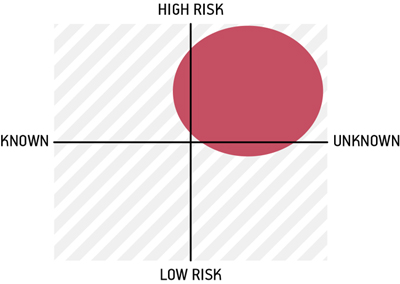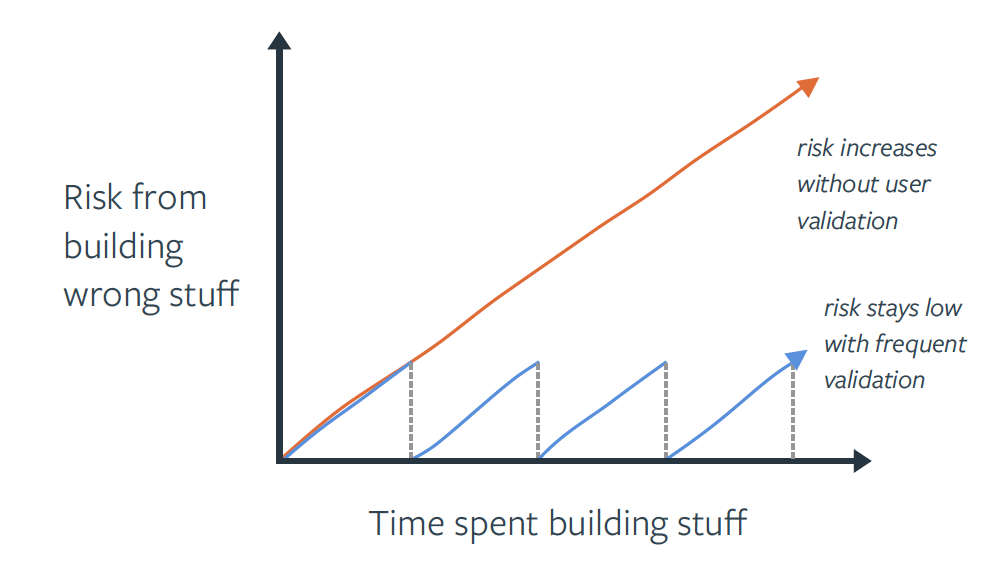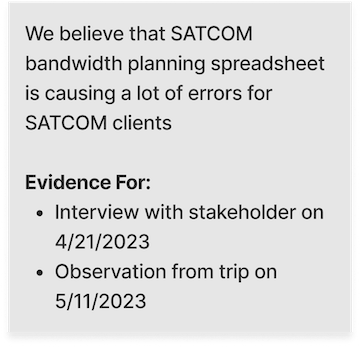Making and Testing Assumptions
What is it?
An assumption is something we take on faith or as a best guess despite a lack of proof, and can range from domain context, problems solutions, usability, technical feasibility, etc. Evidence can be on a scale from “wild guess” to having validated learnings from things like market research or user engagements.
Assumptions are critical to agile software development! If we did research to validate every question we had, we’d be stuck in a never-ending research cycle. Assumptions help give us direction and move forward! We just have to make sure that as we make assumptions, we keep track of which ones are the riskiest.

When working on a product, you and your team may have different types of assumptions about different aspects of the project:
- Domain context
- Problems
- Solutions
- Usability
- Team availability
- Technical feasibility
- Budget
- Etc!
Throughout a product’s lifecycle, it’s helpful for teams to articulate, prioritize and track these assumptions. If you haven’t released software in awhile, your product is likely full of risks and assumptions. This can especially be the case early in a product’s lifecycle as you build toward an MVP. Testing the riskiest assumptions will help you ensure you’re spending effort in the right areas of your product while reducing waste from rework.
Check out the Assumptions Workshop - Delivery Playbooks for an in depth how to.

Why do it?
- Writing down the assumptions about a product, its users, problems, technical feasibility , solutions etc.. helps the team gain a shared understanding of what underlying beliefs the team has about what needs to be true in order for a product to be successful. Assumptions represent risks to success for your team and the product(s) you build.
- It’s important to understand, as a team, which assumptions are the riskiest (i.e. which ones- if proved wrong could risk the success of a product) so you can engage in activities to help de-risk those assumptions.
- Tracking the assumptions and the evidence that adds validity (or removes validity) to the assumption is helpful in making decisions on whether to pivot or persevere. If a key assumption you made early on in the product life cycle turns out to be incorrect- it’s important to evaluate how that assumption being invalidated informs what you do next as a product team.
- Tracking and de-risking assumptions also allows teams to feel more confident that the product(s) they’re building and releasing will be desirable, viable & feasible to build.
Assumption Writing Tips:
-
Try to frame assumptions in the positive (even if you’re not super confident in them).
- Examples:
- We believe users will be able to find the upload folder
- We believe that operators need a way to help schedule taskings
- We believe that we’ll be able to establish a continuous CI/CD pipeline in 3 months
-
Try to think about all aspects of a product:
- Usability
- Feasibility
- Viability
- Desirability
- Etc..
-
If you can, write down any evidence you may have for or against a particular assumption. Example:

Relevant Links
Assumptions Workshop - Delivery Playbooks
Tracking Research Questions, Assumptions, and Facts in Agile